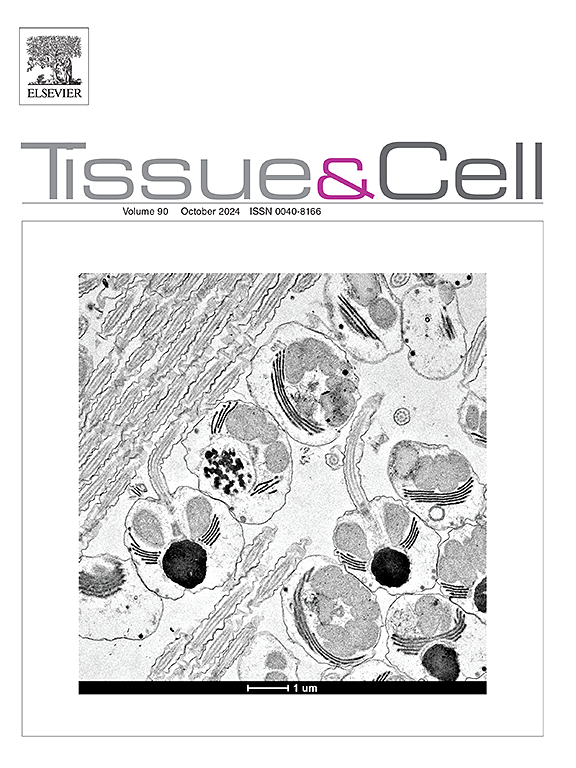Exercise induced irisin mitigates hepatitis in anabolic-androgenic steroids treated rats via modulation of PGC-1-α/PPARγ/Nrf2 and NRF2/NF-κB/TLR4 signaling
IF 2.7
4区 生物学
Q1 ANATOMY & MORPHOLOGY
引用次数: 0
Abstract
Irisin, a myokine released during exercise, has been shown to exert protective effects against metabolic and inflammatory disorders. Its role in mitigating hepatic damage induced by anabolic-androgenic steroids (AAS) remains largely unexplored. This study was conducted to examine the effects of exercise on irisin level and its capability to prevent hepatotoxicity caused by anabolic androgenic steroids (AAS) in rat model. The fifty-two male rats were divided into four groups: control, AAS treated (15 mg/kg/day S.C/8 W), exercised, and exercised- AAS treated. The following procedures were carried out: liver function tests, serum irisin, tissue inflammatory and oxidative stress markers, macro and micromorphological evaluation, and the examination of nuclear factor erythroid 2-related factor 2 (Nrf2), peroxisome proliferator-activated receptor-gamma (PPARγ) and its coactivator-1α (PGC1α) by immunohistochemistry. The liver tissue's expression of nuclear factor kappa B (NF-κB), Toll-like receptor-4 (TLR4), and Nrf2 mRNA was also assessed. After administering AAS to animals, aerobic exercise was found to significantly improve liver function tests, inflammation, and oxidative stress, reduce liver weight, improve morphological and histological changes, and improve the hepatic injury score. Furthermore, there was a notable rise in serum irisin, hepatic PPARγ, PGC1α, and Nrf2 immune-expressions and Nrf2 mRNA expression, while NF-κB and TLR4 mRNA expressions were significantly decreased. In conclusion, the irisin/PGC1α/PPARγ/Nrf2 and Nrf2/NF-κB/TLR4 signaling pathways may be modulated by aerobic exercise, which also reduces the liver's oxidative stress and inflammatory reactions to AAS treatment.
求助全文
约1分钟内获得全文
求助全文
来源期刊

Tissue & cell
医学-解剖学与形态学
CiteScore
3.90
自引率
0.00%
发文量
234
期刊介绍:
Tissue and Cell is devoted to original research on the organization of cells, subcellular and extracellular components at all levels, including the grouping and interrelations of cells in tissues and organs. The journal encourages submission of ultrastructural studies that provide novel insights into structure, function and physiology of cells and tissues, in health and disease. Bioengineering and stem cells studies focused on the description of morphological and/or histological data are also welcomed.
Studies investigating the effect of compounds and/or substances on structure of cells and tissues are generally outside the scope of this journal. For consideration, studies should contain a clear rationale on the use of (a) given substance(s), have a compelling morphological and structural focus and present novel incremental findings from previous literature.
 求助内容:
求助内容: 应助结果提醒方式:
应助结果提醒方式:


